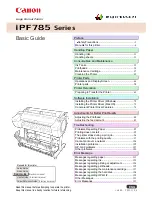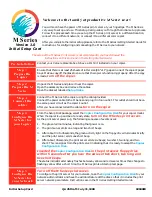
65
UBI EasyCoder 301 Direct Protocol – Programmer's Guide Ed. 1
Chapter 9 Advanced Features
The data input to text fields and bar codes takes the form of an
ASCII string. Even compound data, such as...
PRTXT “Label No.”;CNT1$;” Date “;DATE$(“F”)
is expanded by the printer into a single ASCII string before any
other processing occurs. This ASCII string is then converted to a
string of international character codes according to the Unicode
standard. Every character, whether it be a Latin “A”, Greek “alpha”
or Chinese “ren”, has a unique code in this standard, called its
“unicode”.
Unicoded fonts
The EasyCoder 301 works with Unicoded fonts in either Bitstream
Speedo or TrueType format: its font scaler accesses images of char-
acters within these fonts according to the character’s unicode. Some
care is required when using fonts not built into the printer:
• If a font is not Unicoded, the font scaler will access the wrong
characters.
• A font may not include all the characters in the current character
set, as specified by the
NASC
command. If a text field contains a
character which is not in the current font, then a replacement
character will usually be printed instead. The replacement character
for Speedo fonts is a space, while for TrueType fonts it is usually
an unfilled rectangle.
NASC and NASCD tables
There are many national and international standards for mapping
ASCII strings to strings of unicode. The EasyCoder 301 provides
support for virtually all of these. There are two types of mappings:
• Single-byte mappings, which map one ASCII character to a
unicode. The EasyCoder 301 supports these using “NASC tables”.
For example, for each
NASC
setting listed in chapter 6.11, the
EasyCoder 301 has an internally stored NASC table. User defined
NASC tables can also be stored in the printer as a file (see later in
this chapter).
• Double-byte mappings, which map pairs of ASCII characters to
unicodes. The EasyCoder 301 supports these using “NASCD
tables”. Currently, there are NASCD tables for the most common
double-byte mappings used for the large Asian character sets:
BIG5, GB, JIS and Shift-JIS.
2. Using
International
Character Sets
















































